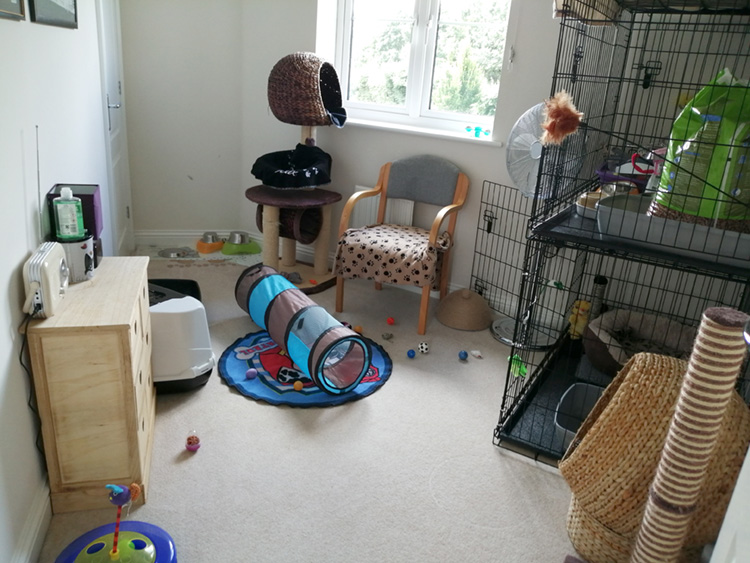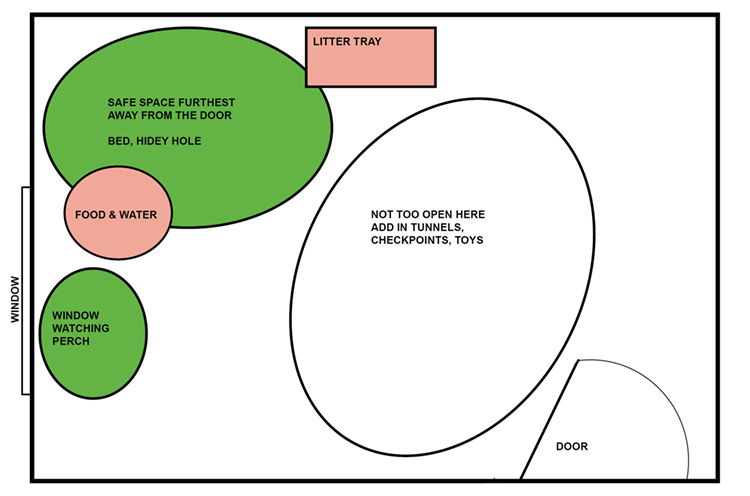New cat
How to set up your home to help your new cat settle in quickly
Cats, Adopters, Cat behaviour, Kitten

A spare room is best - one that you won't need to go into except to be with the cat. A utility room isn't a good choice, as you're constantly in and out and using noisy machines. Plus, you’ll be surprised how a cat can fit behind that washing machine!
Before you get started, you'll need to...
Now you’ve blocked off unsuitable hidey spots, you can start adding some suitable ones back in!
Set up a bed and safe space at the point furthest from the door. Two chairs and a blanket or sheet can make a great covered area.

High spots are also important - a large cat tree or shelves work well. You can give a little cover with a pinned sheet.
Once you have the key resources in place, do not move them around.

Providing these will help your cat explore and feel more comfortable with you around and by themselves. It doesn’t have to be expensive items and often children’s toys can be repurposed. Here are our favourites:
Your cat will need to have food and water provided every day, but also spend time in the same room as your cat a few times a day.
» Read our advice on how to make friends with a nervous cat
Always go into their room at the same times each day and, before you enter, knock on the door so the cat has a chance to hide. The routine will be very reassuring to the cats so they can relax in between visits.
Once your cat seems comfortable with your presence in the room (e.g. not hiding away, out in the open and happy to be handled), you can start to expand their base one room at a time. The hallway is usually the next room. Close all the doors to the other rooms and again have a hazard/furniture/small space access check and plug any gaps with blankets or cushions.
Keeping access to their secure room open in case they need to retreat, move one of their play tunnels near the doorway which they will use as a checkpoint – that is, somewhere to run to and safely stop and check out the new space. Stay with them in the hall, initially ignoring them and letting them relax and look around without coaxing or interrupting.
Once you feel they are settled, try and instigate a play or offer tasty treats as you would in their secure room. Some cats will quickly adapt to opening up the house, others will need more time. Learning where your cat is comfortable will be part of your bonding. Do this step by step right until they are comfortable going out into the garden, always let them outside before a meal, so you can reward them with dinner or a snack and they’ll learn to come when called.
Always check for hazards and open windows before letting your cat have access to a new room, and always let them choose to go back to their secure room if they want to.
When a cat chooses to enter a new room you are in, don’t make a fuss about it, just say hello and let them explore and come to you.